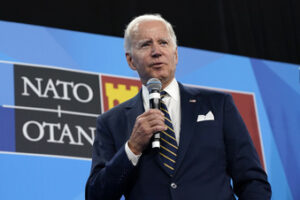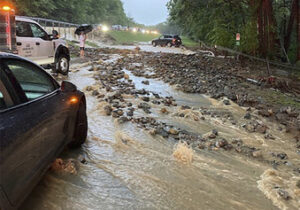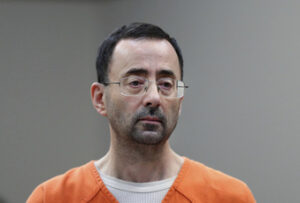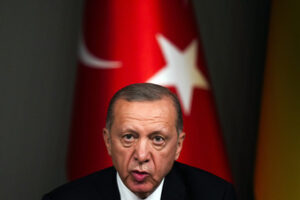Benedict death paves way for protocols to guide future popes
5 min read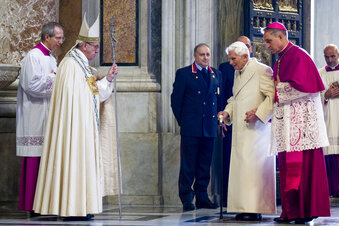
FILE - Pope Francis, second from left, watches Pope Emeritus Benedict XVI enter St. Peter's Basilica accompanied by Monsignor Georg Gaenswein, right, at the Vatican, on Dec. 8, 2015. Pope Benedict XVI's 2013 resignation sparked calls for rules and regulations for future retired popes to avoid the kind of confusion that ensued. Benedict, the German theologian who will be remembered as the first pope in 600 years to resign, has died, the Vatican announced Saturday Dec. 31, 2022. He was 95. (AP Photo/Andrew Medichini, File)
VATICAN CITY (AP) — There was no tolling of the bells of St. Peter’s Basilica, no solemn announcement by a Vatican monsignor to the faithful in the square. A fisherman’s ring did not get smashed and the diplomatic corps were not mobilized to send official delegations to Rome.
The death of Pope Emeritus Benedict XVI passed in an entirely un-papal-like manner Saturday, with a two-sentence announcement from the Vatican press office, making clear once and for all that Benedict stopped being pope a decade ago. The rituals of his passing were less like the ones of a pontiff, monarch or Vicar of Christ on Earth and more akin to those of a retired bishop, even if he will be buried in the red vestments of a pope.
In a way it was fitting, and drove home that the new chapter in the history of the Catholic Church that Benedict began writing in 2013 when he became the first pope in 600 years to resign had ended, and that it’s now up to Pope Francis to follow up with how future popes might retire.
Will Francis issue new protocols to regulate the office of a retired pope, after Benedict largely winged it on the fly? Will he feel more free to consider his own retirement, now that the main impediment to resignation — having two emeritus popes at the same time — has been removed? How does a reigning pope celebrate the funeral of a retired one?
“I think that his death will open problems, not close problems,” said Massimo Franco, the author of “The Monastery,” a book about Benedict’s revolutionary retirement.
According to preliminary information released by the Vatican, Benedict’s funeral Thursday in St. Peter’s Square seems designed to be low-key, in keeping with his wishes for “simplicity” but also making clear that his status as an emeritus does not merit a pomp-filled papal sendoff.
When John Paul II died in 2005, presidents, prime ministers and kings from more than 100 countries attended the funeral presided over by none other than Cardinal Joseph Ratzinger, who would become Benedict XVI after his election as pope 10 days later.
For Benedict’s funeral, the Vatican only invited Italy and Germany to send official delegations, and advised foreign embassies that any other leaders who wished to attend could do so but only in their “private capacity.”
Benedict’s body will lie in state in St. Peter’s Basilica starting Monday, but the three-day window for the faithful to pay their respects suggests a limited outpouring is expected. After John Paul’s death, an estimated 2 million people lined up for four days and nights to say a final farewell, with some camping out on the cobblestones.
Italian security officials estimate some 60,000 people could attend the funeral, a fraction of the 300,000 who packed the piazza and surrounding streets in 2005.
Francis, for his part, offered a first word of tribute Saturday during his New Year’s Eve homily, after having paid his respects Saturday morning immediately after Benedict died with a visit to the converted monastery where his predecessor lived. Francis praised Benedict’s nobility and faithful prayers in his final years, but otherwise stuck to a previously prepared homily about the need for kindness and dialogue in today’s world.
Francis will have the final word on Thursday, when he eulogizes Benedict, whom he has praised for his courage in “opening the door” to letting other popes retire.
But Francis himself has said protocols are needed to guide future papal retirements, saying the situation had worked out well enough in Benedict’s case because he was “saintly and discreet.” The death of Benedict now removes the key obstacle to any new law or procedures that could never be promulgated while he was still alive.
While a future pope could change any decree Francis issues, canonists, cardinals and even rank-and-file Catholics have argued new norms are needed because Benedict’s decisions in retirement impacted his successor from the very start.
From the title he chose (pope emeritus) to the cassock he wore (white) to the occasional public comments he made ( on sex abuse and priestly celibacy), even Benedict’s supporters felt his choices left too much doubt about who was really in charge, especially for those Catholics nostalgic for his doctrinaire papacy.
Throughout Benedict’s 10-year retirement, many traditionalists continued to consider Benedict a point of reference, and some even refused to respect the legitimacy of Francis as pope.
“I am convinced that the most appropriate ways will be found so as not to engender confusion in the people of God, even though this doesn’t seem to me to be the right time for proclamations and clarifications,” Geraldina Boni, a professor of canon law at the University of Bologna, said.
Thanks to Benedict’s “meekness and discretion,” and Francis’ “strong and affable temperament,” any possible rivalry was avoided, she said. But that may not be case in the future.
The work to clarify how things would work the next time there is both a sitting and a retired pope has already started. A team of canon lawyers launched a crowd-sourcing initiative in 2021 to craft a new church law to govern how a retired pope lives out his final years.
The project, explained at progettocanonicosederomana.com, includes proposals on everything from his title to his dress, pension and activities to make sure they “don’t interfere directly or indirectly” with his successor’s governance.
According to the draft proposals, which were the subject of an academic conference in October, a future retired pope should be referred to as the “bishop emeritus of Rome” not a “pope emeritus.” While he could still wear the white cassock of the papacy, his fisherman’s ring must be destroyed, as Benedict’s was in 2013, and his insignia must remove “all symbols of his Petrine jurisdiction.”
He should promote the unity of the church but cannot participate in any meetings of bishops or cardinals, and should consult the reigning pope before publishing anything on the doctrine and life of the church, social questions “or anything that can be considered as competing opinions with the pontifical magisterium.”
“There was a time when we were accused of having imprudently chosen a theme that was too controversial,” given Benedict was still alive, said Boni, who spearheaded the initiative. “On the contrary, the need for norms covering a pope who resigned has been affirmed repeatedly by high-level church figures.”
While it’s unclear if the proposals will be taken up by the Vatican, Francis regardless will find it easier to resign himself and to regulate the process for future popes since Benedict took the first step.
“We have to get used to the idea that popes will live long lives and that, in the end just like my grandfather or your grandfather and everyone’s grandfathers, they can’t continue,” Luis Badilla, who runs the popular Vatican blog Il Sismografo, said. “But they are still part of the family, and this is something beautiful. It gives us a normal church, not a martian or other-worldly one.”


